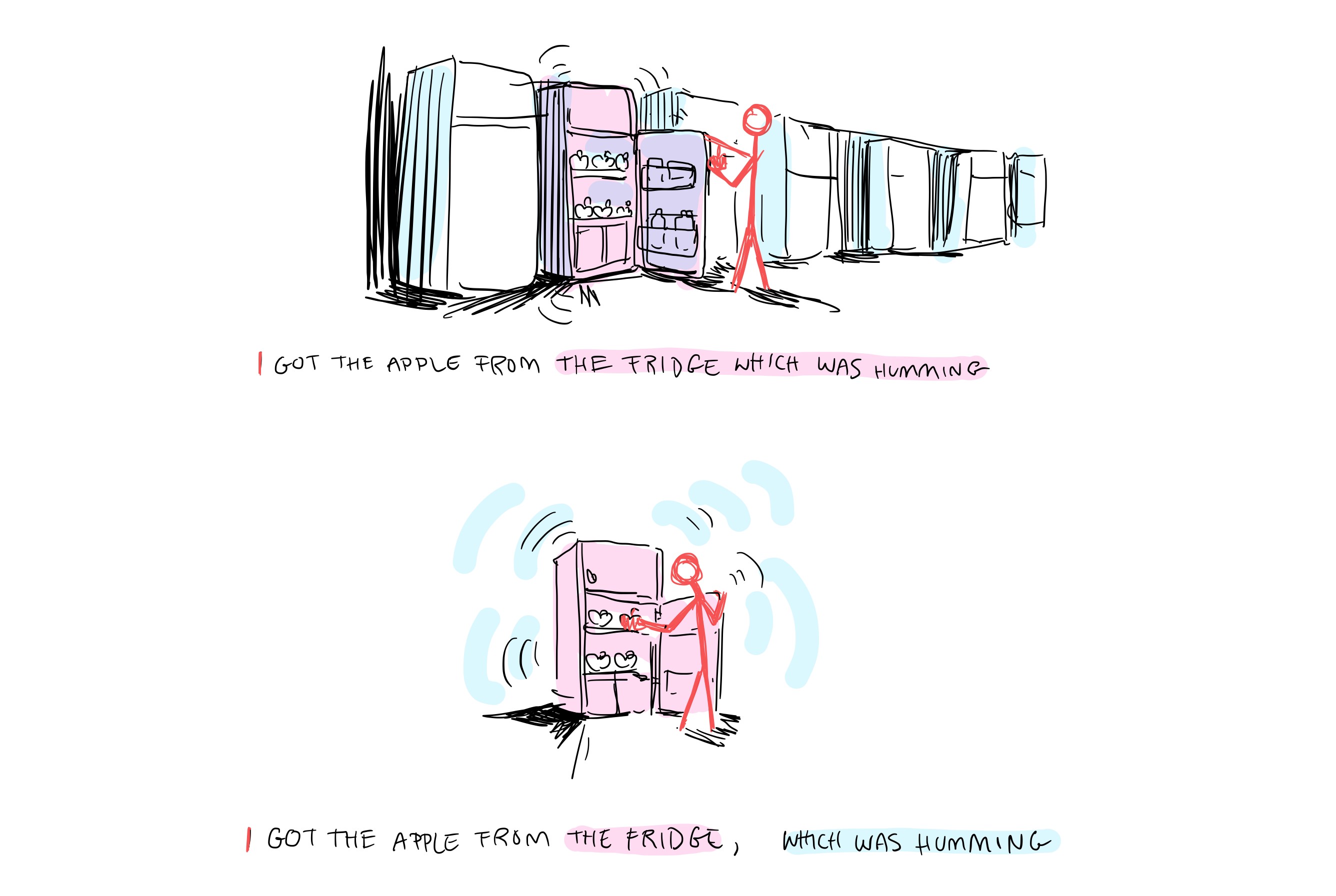How many fridges are in each of these sentences?
- I got the apple from the fridge which was humming.
- I got the apple from the fridge, which was humming.
In the second sentence there is one fridge. But in the first sentence, there appears to be more than one, but only one of them is humming?

English makes a distinction between qualifying clauses that identify a specific person/thing and qualifying clauses that simply add more information about a person/thing.
Here’s an example of the ‘identifying’ kind:
- Like most people, she was terrible at things she didn’t like.
The qualifying clause in this case is identifying exactly which things she is terrible at.
If we removed the qualifying clause, we’d get:
- Like most people, she was terrible at things.
This makes it sound like she’s terrible at “things in general”, rather than the specific set of things that she doesn’t like.
Here's an example of the ‘non-identifying’ kind, which is just adding extra detail:
- My mother looks at my father, who is looking off toward the window.
The qualifying clause in this case is adding more information about the father, but we don’t need that clause to understand who the mother is looking at. We get that information from the main clause:
- My mother looks at my father.
So about the comma
Commas create pauses, which help to separate ideas. Because 'non-identifying' qualifiers are slightly separate from the noun group they modify, we use a comma to show that separation.
The comma is important, and can change the meaning of your sentence if you don’t use it correctly.
Back to our sentences about the humming fridge:
- I got the apple from the fridge which was humming.
- I got the apple from the fridge, which was humming.
Both of these are qualifying clauses describing the fridge as “humming”, but:
- In the first, it’s an ‘identifying’ clause—the fridge is being defined as “the specific fridge that hums”.
- In the second, it’s a ‘non-identifying’ clause (shown by the comma)—the fridge “just happened to be humming when I got the apple”.

